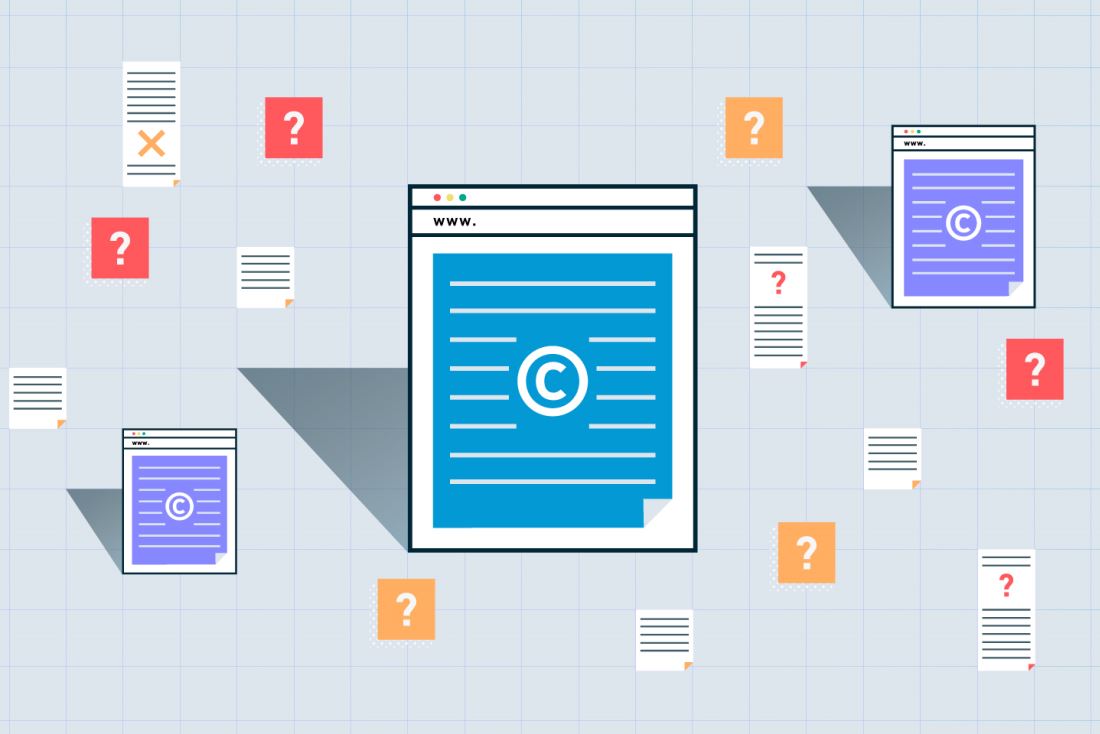Article
The Truth About Copyright Notices on the Web

At BrandExtract, we are responsible for advising our clients on best practices for many hundreds of websites. Because of that, we have the luxury of being able to spend time scrutinizing the tiniest details in order to arrive at best practices that can be leveraged for all. Usually, that scrutiny confirms widely held beliefs; sometimes it reveals small changes we can make that will improve a website incrementally; and occasionally it reveals that pretty much everybody is doing it wrong. This is one of those times.
Do Copyright Notices Even Matter?
You may have heard people say that you don't really need to put a copyright notice on your web page because it's automatically under copyright protection. There's some truth in that. Per the U.S. Copyright Office, "Your work is under copyright protection the moment it is created and fixed in a tangible form that it is perceptible either directly or with the aid of a machine or device." However, that's not the whole story.
A copyright notice lets casual plagiarizers know that you do not give them permission to "borrow" your content. That could potentially save you the hassle of having your lawyers send a letter. In more serious matters, having the copyright notice could lend additional credibility should you need to take someone to court.
Taking time to register your content with the U.S. Copyright Office is an optional step, but it does give added protection. If you ever need to take someone to U.S. Court over content theft, you must have a registered copyright.
Would Anyone Really Steal My Content?
Yes, people will steal your content. There are two scenarios we've seen arise where bad actors have taken content off of a website to use for their own nefarious purposes.
In the first, a company's website is replicated in part or in whole with a change in the URL that most people would not notice. Sections of the site are then manipulated to lure people into sending the perpetrators money in exchange for non-existent employment or business opportunities. It's a loathsome practice.
In the second scenario, someone may steal your valuable content in an effort to drive traffic to their own site. They use your hard work to steal your traffic. Take this post for example. Over the course of the past decade, I've spent many hours researching this topic, and a few more hours writing this article. I did not do this solely out of kindness. I did it so that people would find this content on our website, see that we are thoughtful about the work we do, and then consider reaching out to us when they are in need of our services.
We should do everything we can to discourage both of these situations.
Registering With the U.S. Copyright Office
This is where I get to tell you about something new and awesome. To date, it has been tedious and expensive to register blog-style content with the Copyright Office. Each post would require a separate application and a separate registration fee of $65. In August of 2020, the Copyright Office will be rolling out a new service called "Group Registration for Short Online Literary Works" or "GRTX". With GRTX you can register up to 50 posts or articles by a single author from within a 3 month period, with a single application and a single fee.
Perhaps you have a prolific partner who writes a blog post every week. To register that author's work before GRTX you would need to have submitted a separate application with a $65 fee for each work. Over the course of a year, that's 52 separate applications and $3380. With GRTX, you can submit just one application per quarter (each with about 13 posts) for a total cost of $260 for the year. For someone who is writing 2-3 posts per week, the cost can be amortized out to $1.30 per post.
What About the Date on a Copyright Notice?
Every time the calendar rolls over to a new year, we receive calls from clients who are surprised to see their copyright date has not been updated. They are worried that the older date will lead visitors to think the website is not being maintained or that the content is not current. The copyright date is not a freshness stamp. It is there to indicate when the content was first published so that it is protected from that date forward. Changing the copyright date could complicate your claim on the content for prior years.
Our Advice for Displaying Copyright Notices With Dates
We understand that your visitor's perceptions matter, and since the true purpose of the copyright date is frequently misunderstood we want to solve for both copyright protection and visitor perception. To accomplish this we recommend presenting the copyright notice with the date as a range starting with the year of first publication and ending with the current year.

It's a simple solution that meets both goals. For customers who are on the SAM CMS, we can automate this by referencing the date of the first chunk revision. Unlike most content management systems, SAM stores every change ever made to a piece of content and timestamps it which is pretty nifty in situations like this.
Resources
- General Copyright FAQ's (copyright.gov)
- Group Registration for Short Online Literary Works (GRTX)
- GRTX Webinar Presentation
A Few Extra Insights
Hopefully, we've clarified some of the confusion surrounding website copyright notices. If you're interested in learning more about other digital and website best practices, we're happy to chat. Plus, here are a few more tips to help:
- Find out how to make your site mobile-friendly and rank in Google
- Learn about why website accessibility is so important when developing a new website.

